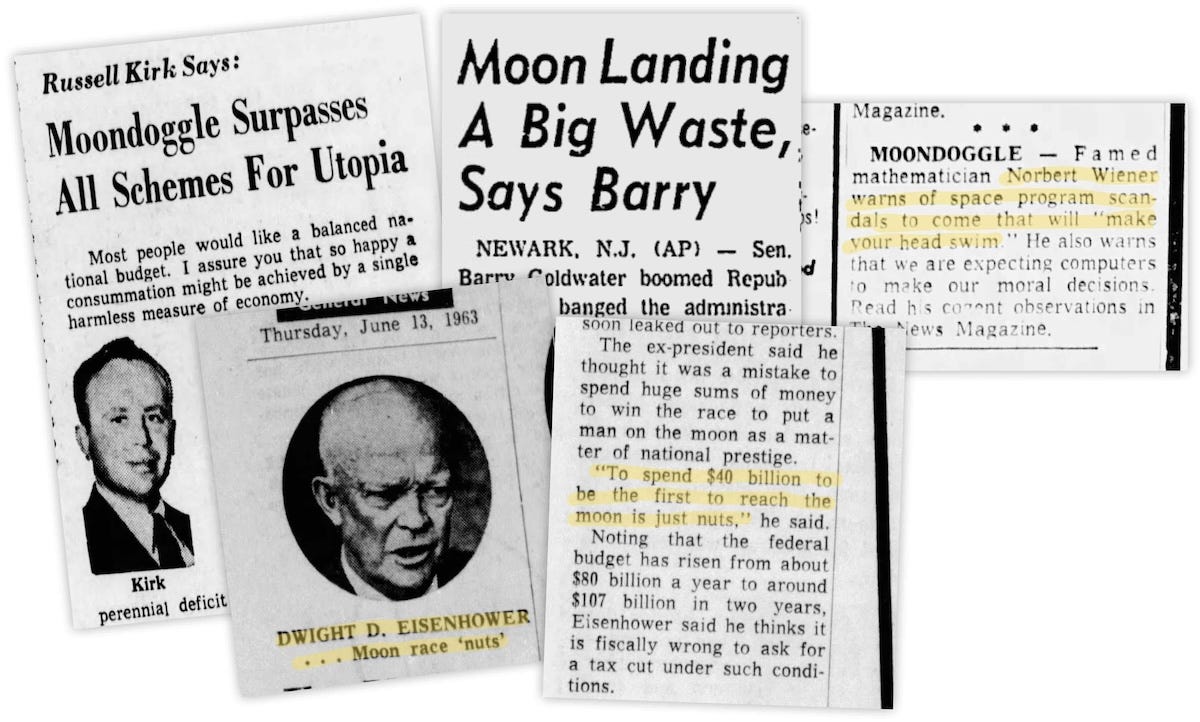AI drivel, CapEx, and war; going to the moon; getting your passport is actually easy now. Plus our wetter — and drier — future.
NYC Tech X Abundance Event
We’re teaming up with a great group of partners on a meetup to bring the technology industry of New York City together to talk all things Abundance.
It’s a hot topic for this sultry August — so hot, our waitlist is already at 275 for what we planned to be a 100-person event. But if you still want a shot, head over to the Luma and sign up and we will do the best we can. More abundant venue spaces, please.
From Lux Capital
In Lux news this week, Citi just announced that it is deploying Devin, an AI software engineer built by Cognition, a portfolio company focused on building collaborative AI teammates in the tech sphere.
Lux’s Deena Shakir visited TBPN to chat about all things AI and health.
And Armada, a Lux company focused on developing and building relocatable data centers to bring compute to remote areas, has raised $131 million in funding. It will use the money to scale Leviathan, a data center for training AI.
From around the web
1. Quote unquote
AI drivel isn’t limited to Obama arrest videos, the particulars of Trump’s tariff strategy, and line-item DOGE cuts. Sometimes, it is as mundane as a fabricated news quote from an expert who might have gladly given a statement had they only been asked. In this piece I read over at wiczipedia, Nina Jankowicz lives to tell the tale of her maddening experience trying to correct the AI record.
To sum up: a news outlet fabricated a quote—possibly using AI—about an article on AI, and AI chatbots hoovered up the article and are now attributing the quote as fact. As my colleague Sophia Freuden and I wrote earlier this year, “iterative relationships between large language models—that is, models being trained on AI-generated content, generating additional content, and so on—threaten to make an ouroboros of the internet.” And now I appear to be trapped in it.
2. CapEx Machina
We’re all still grappling with sorting AI fact from fiction, but as a percent of GDP, AI CapEx has already surpassed spending during the dot-com bubble and the 2020s telecom boom. It is even nearing peak spending on the railroads in the 19th century. Using all this money for AI means it isn’t paying for other things, though, and in this article recommended by Lux’s Grace Isford, Paul Kedrosky investigates what’s losing out.
One of the abiding mysteries of the current political era is why the economy is, for the most part, not as worried as one might expect about tariffs, political uncertainty, capricious office-renovation-driven-Fed-chair rumored removals.
We now have a possible answer. In a sense, there is a massive private sector stimulus program underway in the U.S.. There is an AI datacenter spending program, one that is reallocating gobs of spending, as well as injecting even more.
3. Guns, germs, and GPT
Gustavs Zilgalvis, a former associate at Lux, published a fascinating new deep-dive on the quest for what he calls the “Fourth Offset,” a durable strategic advantage in national security derived from cornering the development and deployment of artificial general intelligence. At a “critical scale,” he writes, AGI could essentially automate its own research and development, giving the first nation to reach that scale an enormous advantage in cyber, defense, and counter-proliferation technologies.
In the manner that the architects of the atomic bomb postulated a “critical mass”—the amount of fissile material needed to maintain a chain reaction—we could conceive of a “critical scale” in AGI development, the point at which a foundation model automates its own research and development. A model at this scale would result in an equivalent research and development output to hundreds of millions of scientists and engineers—10,000 Manhattan Projects.
4. Houston, we had reservations
Skeptical? Worried? Laurence Pevsner flags a new history on the U.S. space program in Pessimists Archive. Author Louis Anslow points out that 58% of Americans opposed going to the moon after President John F. Kennedy announced it as a goal in 1961. Even a decade after the landing, only 47% of Americans thought it was worth it.
5. One small step for passports
Most Americans (at least the ones who believe we actually did land on the moon) now reflect on the space program with national pride — a feeling that Neil Armstrong’s stroll is something we did right. That sentiment may be in short supply these days, but I’d like to point out that we’ve recently scored another victory. In many places, you can now apply for a passport renewal online, upload a photo from your phone, and pay via credit card. In surveys, 94% of applicants who’ve used the new system approve.
As boxes of paperwork spilled into the hallways, bureau officials scrambled to keep up. Long before DOGE, they even brought in outsiders to hunt for inefficiencies. To do their jobs, passport specialists go through a bin of applications, return that bin when they’re done and then grab another. At one point, the bins were moved closer to their desks to save them a few seconds of walking, hoping those seconds would add up over time. But ultimately, the bureau’s power was limited.
“Our only tool to produce more passports was elbow grease,” said Rena Bitter, the assistant secretary for consular affairs during the Biden administration. “Obviously, that had to change.”
6. Bacterial batteries
Scientist-in-resident Sam Arbesman closes out our recommendations this week with a look by Niko McCarty in Asimov Press at an exciting new bacteria. These cable bacteria do what scientists once thought was impossible — coordinate like tissues and behave like electrical circuits — and may provide a key to lowering agricultural emissions worldwide.
A team of Aarhus scientists first discovered cable bacteria in a nearby lake in 2012. These microbes stack together, thousands of cells end to end, to form centimeters-long chains. One tip of this microbial chain oxidizes sulfide in the mud, stripping it of electrons. Once freed, those electrons then race up the chain toward the water’s surface, where a cell at the chain’s tip passes them to an acceptor molecule, such as oxygen or nitrate. Cable bacteria function, effectively, as living batteries.








